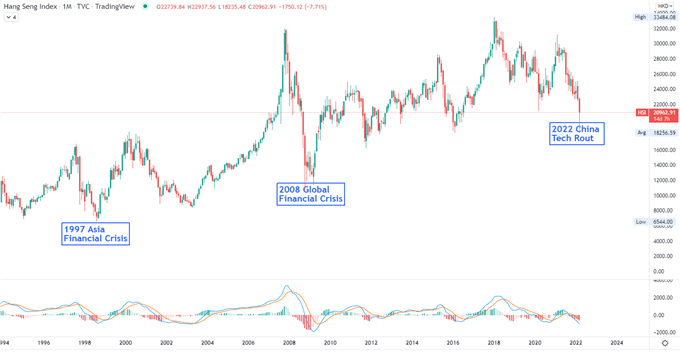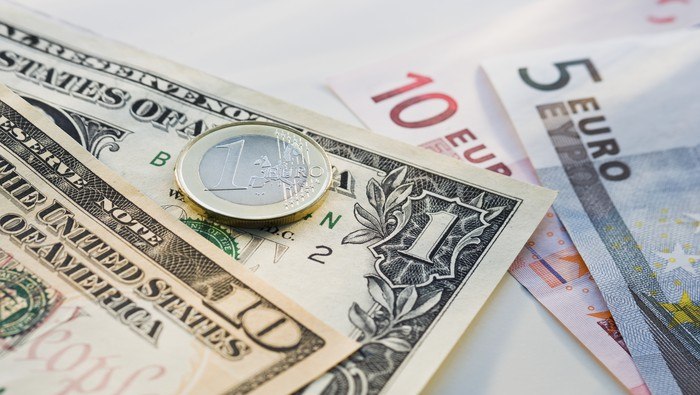HANG SENG INDEX OUTLOOK: BULLISH
- HSI registered a two-day gain of 14% after China’s state council vowed to support the stock market
- The index fell the most since the 2008 global financial crisis during the first half of the month
- Authorities’ pledge to ease regulatory curbs on the tech sector may pave the way for further gains



Hong Kong’s Hang Seng Index (HSI) and Hang Seng Tech Index (HSTECH) are embracing a meaningful rebound this week after China’s state council announced plans to stabilize the financial market and revitalize investor confidence. HSI surged 9% and HSTECH soared 22% on Wednesday after the official Xinhua news agency posted the state council’s statement. Chinese tech ADRs listed on US exchanges extended the rally overnight, led by Alibaba (+36.7%), JD.COM (+39.4%) and Tencent (+33.4%).
China’s high-level officers gathered on Wednesday for a special meeting to study the current economic situation and capital market issues. The authorities pledged to support overseas stock listings and to keep Chinese capital markets stable. They also promised to implement measures to help handle risks for property developers. Regarding Chinese companies listed in the US, Chinese and US regulators have reportedly maintained good communication and made positive progress.
Positive signals sent by the state council may mark a “policy bottom” for Hong Kong stocks after a year-long selloff. The technology sector has lost 68% of its market value over the last 12 months due to Beijing’s anti-monopoly crackdown, US delisting threats and a slowing economy. The selloff was exacerbated after the outbreak of the Ukraine war sparked a new round of risk-off price action. As the authorities’ attitude toward platform companies appears to “U-turn”, investors seem to finally see a light at the end of the tunnel.
Indeed, tech giants such as Alibaba, Tencent and Meituan are becoming too big to fail as their platforms have deeply penetrated daily life, becoming part of China’s vast digital infrastructure. People rely on Tencent’s WeChat for communication and payment, Alibaba’s Taobao for shopping, and Meituan’s app for food delivery, dining and entertainment. They are also crucial to the job market as many tech companies provide highly paid jobs and support a growing middle class in tier 1 and tier 2 cities.
Looking at the past 30 years, HSI navigated through many episodes of market turmoil. The magnitude of the selloff seen during the first half of this month marks the third largest monthly decline after the 1997 Asia financial crisis and the 2008 global financial crisis. The index gained 25.5% in the 18 months after the 1997 crash. It surged 55.7% in the six months after the 2008 one. This suggests that Hong Kong stocks tend to rebound over the horizon of 6 to 18 months after each significant dip, although what happened in the past may not be a perfect guide of what’s going to happen in the future.
Hang Seng Index Performance after Financial Crisis over the past 30 Years

Source: Wind Info, DailyFX
The HSI price-to-earnings (P/E) ratio has fallen to 7.9, compared to 22.4 for the S&P 500 and 31.7 for the Nasdaq 100. It is also below its own five-year average of 10.86. Relatively cheap valuation may entice long-term investors to step in for bargain-hunting and cushion downside potential against external headwinds.
Hang Seng Index – Monthly

Chart created with TradingView
--- Written by Margaret Yang, Strategist for DailyFX.com
To contact Margaret, use the Comments section below or @margaretyjy on Twitter





